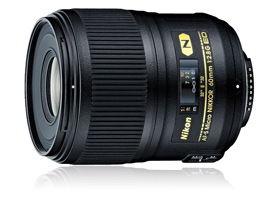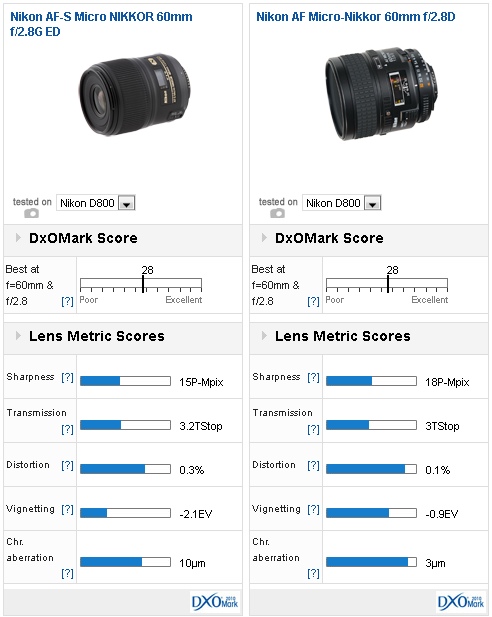Introduction
Nikon replaced the 8-element AF-D version of the 60mm f2.8 Micro with a redesigned model in January 2008. It adopts the firm’s current G-series spec consisting of a built-in sonic type AF motor and a new optical design with a total of 11-elements, including ED (extra low-dispersion) glass and IF (internal focusing). Like its predecessor it has floating elements for improved optical performance at close range and achieves 1:1 (life size) magnification without the use of extension tubes, albeit focusing down to 7.28″ (18.49 cm), slightly closer than the 8.66″ (22 cm) of the model it replaces.
Despite the inclusion an AF motor and more glass Nikon reduced the weight at 15 oz (425 g) versus 15.52 oz (440 g) yet it adopts the same 62mm filter thread, and measures 2.8 x 3.5″ (7.11 x 8.89 cm), slightly longer than the 2.8 x 2.9″ (7.11 x 7.37 cm) of the AF-D version. It is available now with an $80 premium over its predecessor at $546.95.
Nikon AF-S Micro NIKKOR 60mm f2.8G ED mounted on Nikon D800
The Nikkor achieves a DxOMark score of 28 points, a good score overall, but given this model’s reputation, perhaps not quite as high as we expected. Sharpness levels are also slightly lower than expected for a modern lens, especially a macro of this focal length.
Nevertheless, it has good uniformity across the field at the initial aperture with only slight softening in the periphery until f5.6 Optimum performance is achieved at f8 though, while uniformity continues to be excellent across the field, after that diffraction is evident. Slight pincushion is noticeable and vignetting is quite high however, even with ED glass, chromatic aberration isn’t as well corrected as you might hope for in a high-magnification macro like this.
Nikon AF-S Micro NIKKOR 60mm f2.8G ED vs Nikon AF Micro-Nikkor 60mm f/2.8D both mounted on Nikon D800
Side by side with the earlier AF-D model, the revamped G-series version offers no real improvement in optical quality. While the new model is a better performer at the initial aperture across the field, it sacrifices sharpness for uniformity at every other aperture. Wide-open performance is not so important in a macro lens like this where it’s more likely to be stopped down for maximum depth of field. Also, distortion and vignetting are higher though they’re simple enough to correct in software. More of an issue in a macro lens is the relatively high levels of chromatic aberration, which can be more difficult to remove completely.
Conclusion
If you intend to use this G-series model as a more general-purpose lens with its revamped sonic AF motor then this model is unlikely to disappoint. However hardcore macro enthusiasts are still likely to favor the old model due its manual aperture control.
This is crucial when used with Nikon’s current line-up of extension tubes or bellows (which lack automation) to achieve magnifications in excess of 1:1. As a result that model is highly sought after today and can still be found on dealer shelves in limited quantities, though admittedly if that’s not important, then the new lens can still be recommended.







DXOMARK encourages its readers to share comments on the articles. To read or post comments, Disqus cookies are required. Change your Cookies Preferences and read more about our Comment Policy.